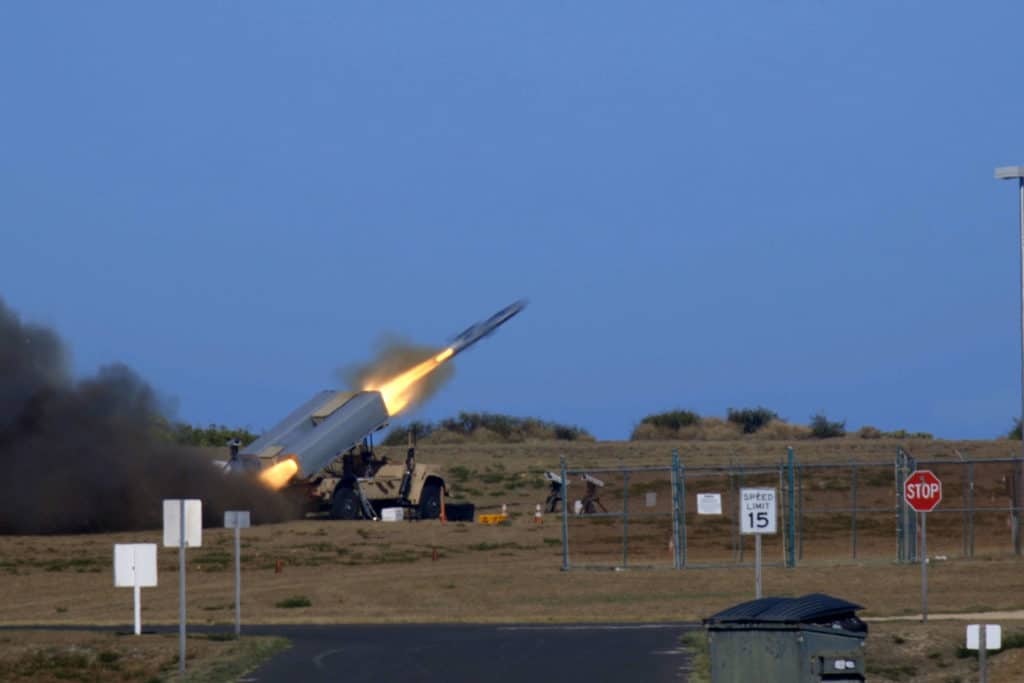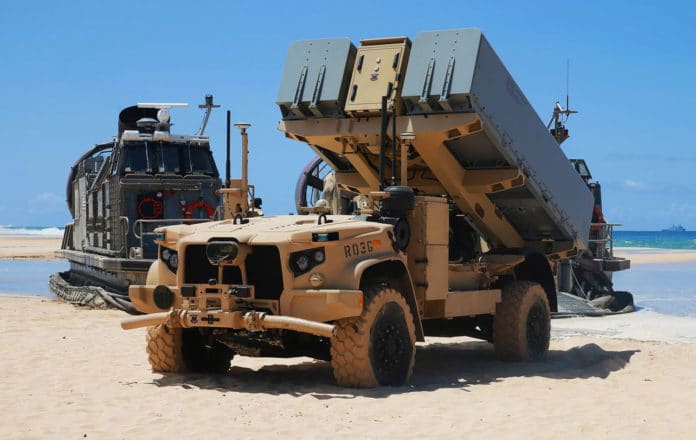Oshkosh Defense successfully demonstrated the Remotely Operated Ground Unit for Expeditionary (ROGUE) Fires, an unmanned missile launcher built on a Joint Light Tactical Vehicle (JLTV) chassis. The first-of-its-kind test saw a ROGUE Fires equipped with a Navy Marine Expeditionary Ship Interdiction System (NMESIS) launcher successfully fired a Raytheon Naval Strike Missile (NSM) and scored a direct hit on a target at sea.
The technology demonstration took place at the Sink at Sea Live Fire Training Exercises (SINKEX) in Hawaii as part of the US Navy’s Large-Scale Exercise (LSE) 2021, a global event in which Sailors and Marines test and validate the Navy and Marine Corps’ operating concepts.
Developed for anti-ship missile operations, the ROGUE Fire is an unmanned ground vehicle (UGV) that leverages the JLTV’s extreme off-road mobility and payload capacity and Oshkosh’s advanced autonomous vehicle technologies. It can be modified to suit mission requirements. The vehicle can be operated in teleoperator or leader-follower modes, which protect Warfighters from threats by removing them from the vehicle entirely.

“ROGUE Fires was purpose-built and leverages next-generation capabilities from several proven Oshkosh Defense vehicle platforms and technologies,” said Pat Williams, Vice President and General Manager of US Army and Marine Corps Programs. “Much like the JLTV itself, ROGUE Fires is tailorable to the mission at hand. The flexible design allows for the integration of scalable weapon system payloads to offer the combatant commanders flexibility based on the mission’s requirements.“
Originally developed by the Norwegian company Kongsberg Defence & Aerospace (KDA), the Naval Strike Missile is a long-range, precision strike weapon, which can be launched from a variety of platforms against a variety of targets on sea and land. The missile weighs slightly more than 400 kg (880 lb) and has a range of more than 185 km (100 nm). It is propelled to its target in high subsonic speed by a turbojet sustainer engine – leaving the 125 kg multi-purpose blast/fragmentation warhead to do its work. Warhead initiation is by a void-sensing Programmable Intelligent Multi-Purpose Fuze designed to optimize effect against hard targets.
The combination of an imaging infrared (IIR) seeker and an onboard target database ensures that the correct target is detected, recognized and hit, at sea or on land. NSM is able to navigate by GPS, inertial, and terrain reference systems.
The NSM has already been in service since 2012 with the Royal Norwegian Navy, the Royal Malaysian Navy, and the Polish Navy’s Coastal Defense Squadrons. However, this was the first time the missile has identified, located, and struck a naval target ship at sea during a US Navy exercise.
